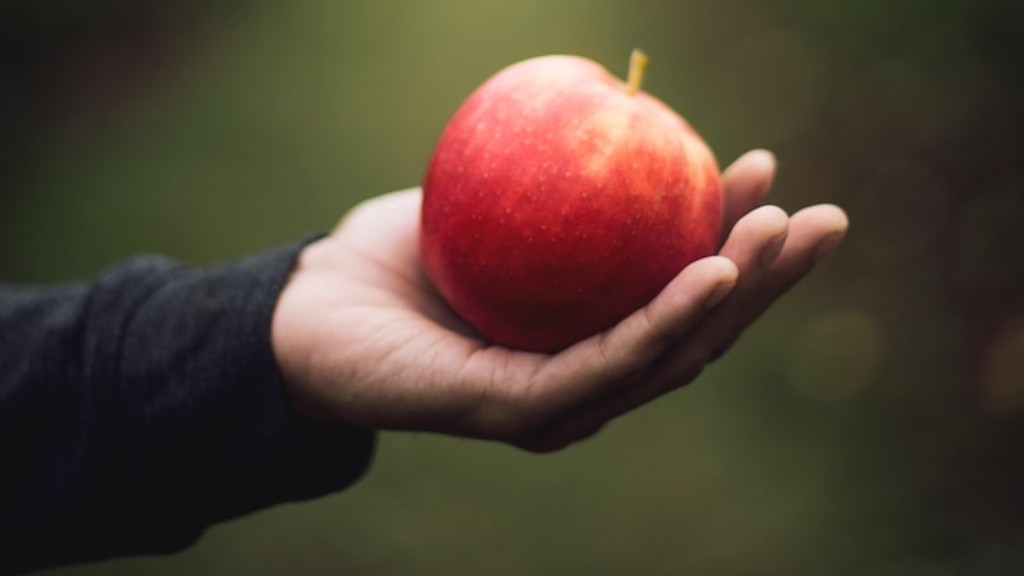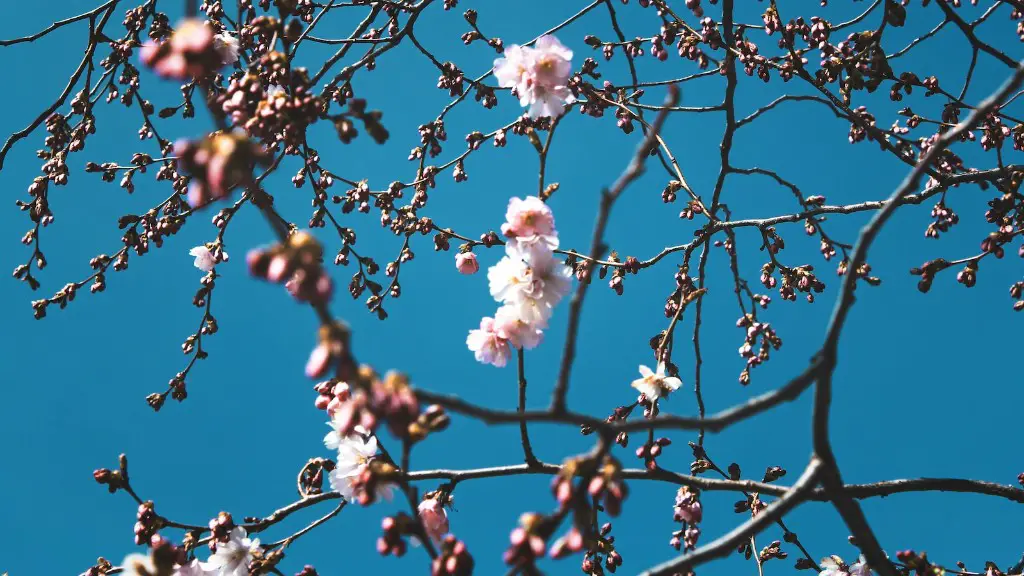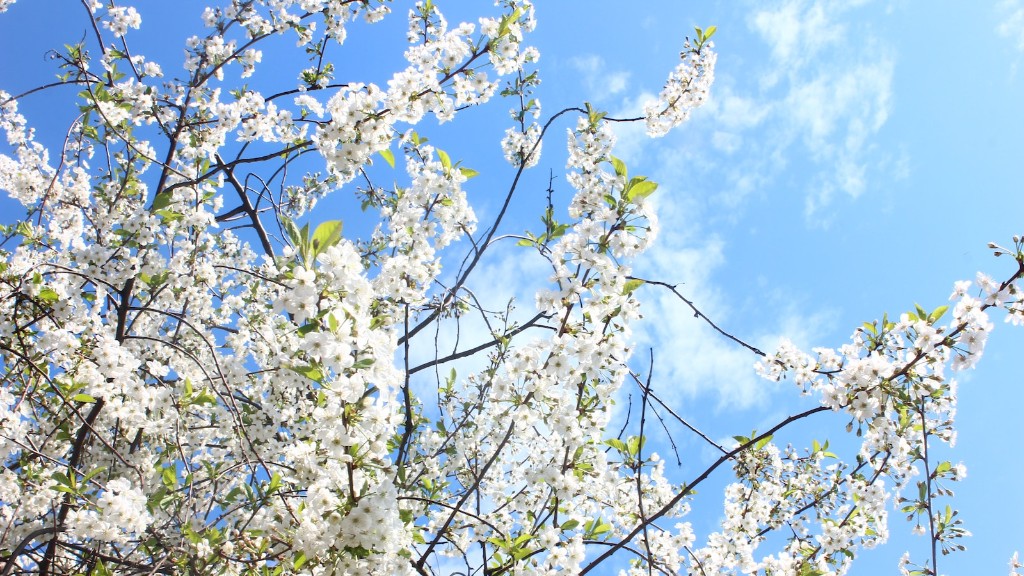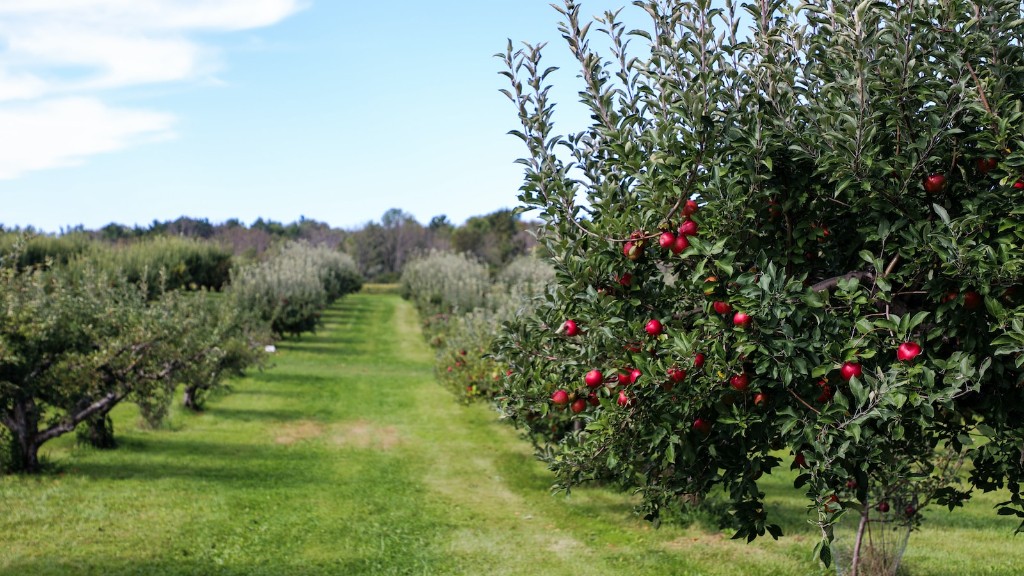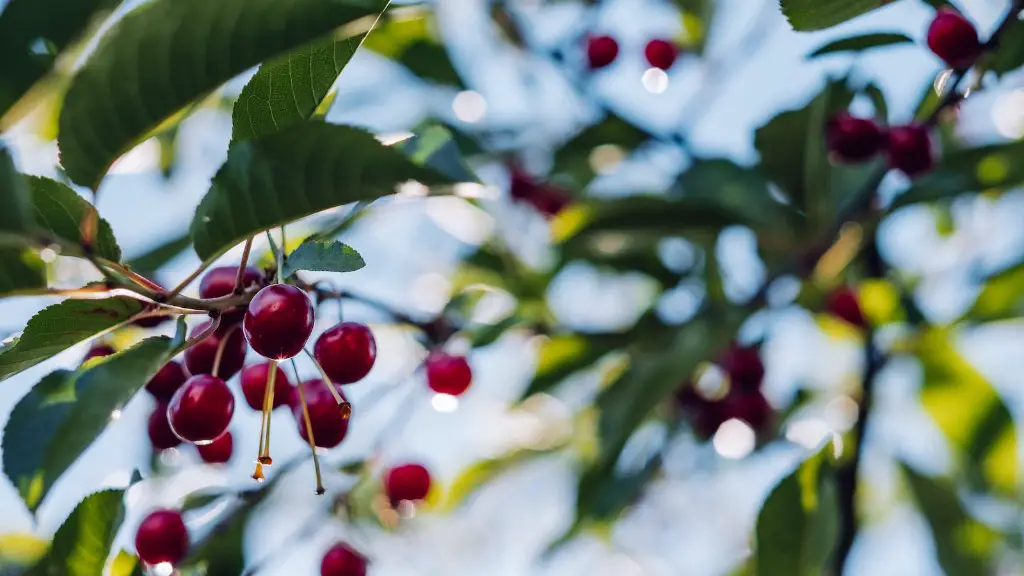Apples have fascinated people since time immemorial. They can be found in abundance in home gardens, orchards, farm stands, and supermarkets. The main reason why apples fall off the tree prematurely is due to environmental or cultural conditions. When environmental factors are a cause, the premature droppage of apples can occur due to excessive heat or cold, excessive rain, low humidity, inadequate sunlight, or damage to tree branches. Under extreme conditions, the tree’s metabolism slows down and its defensive mechanisms are slower to respond. In cultural conditions, the premature dropping of apples may occur due to insect infestations, over-watering, over-fertilizing, over-pruning, or improper tree pollination.
Environmental factors play a major role in the premature dropping of apples. Too much or too little water in the soil can cause apples to drop prematurely. Since apple trees require a specific range of soil moisture that is not available in every climate, it is important to note the soil conditions when planting an apple tree. Over-watering and under-watering are two possible causes of premature apple droppage. Furthermore, certain insects and viruses can also cause premature droppage of apples, as they can weaken the tree’s immune system.
Cultural factors also contribute to premature dropping of apples from a tree. Improper pruning can overstress the tree and cause apple droppage. Pruning should be done carefully and on an annual basis to ensure the tree is not over exhausted. Additionally, over-fertilization can cause premature apple drop. Too much nitrogen in the soil can cause the tree’s metabolism to speed up at a rate that it won’t be able to handle, resulting in premature apple droppage. The same goes for over-pollination. Pollination should only occur during specific times of the year, otherwise too much pollen can cause abnormal growth of apples and even drop them prematurely.
In summary, a combination of environmental and cultural factors can lead to premature drop of apples from trees. In order to prevent this, environmental factors should be taken into consideration when planting an apple tree and it should be correctly watered and fertilized and pruned at the correct times. Additionally, be sure to monitor the tree for signs of insects and viruses.
Fighting Insects Infestation
In order to prevent premature dropping of apples due to insect infestations, apple growers should use control methods such as spraying insecticides on the trees and their surroundings, applying Trichogramma wasps for controlling the codling moth, using insect repellents, introducing natural enemies such as ladybirds and lacewings, and using habitat manipulation and cultural methods such as crop rotation and trap cropping.
Insecticides are an effective way of controlling insects that feed on apples, but they must be used carefully in order to avoid harming other important species such as bees and beneficial insects. Trichogramma wasps are a type of beneficial insect that feed on codling moth eggs and can help to reduce the population of the moths. Insect repellents, such as garlic and hot pepper extract, are also effective against certain insects. Natural enemies, such as ladybirds and lacewings, feed on aphids and other soft-bodied pests. Finally, habitat manipulation and crop rotation can help disrupt the breeding cycles of pests and limit their ability to find an apple tree.
In order to successfully fight insects infestation, it is important to have an integrated pest management plan. IPM plans take into consideration cultural, biological, and chemical methods of control, as well as scouting to monitor and assess insect pressure. By utilizing an IPM plan, growers can successfully fight insect infestations, thereby reducing the risk of premature dropping of apples.
Improper Pollination
Improper field pollination is also a significant contributor to premature apple drop. When field conditions are too dry, the pollen released by the male flowers cannot germinate in the female flowers. This inhibits pollination and can often cause apples to drop prematurely. Furthermore, low plant density can be responsible for inadequate fruit set and subsequent early drop.
In order to prevent improper pollination, apple crops should be planted in well-drained fields with sufficient soil moisture and an adequate population density. Growers should monitor the environment for signs of drought, as dry conditions can prevent successful pollination. Irrigation can be used in order to ensure adequate soil moisture is present and pollen can be effectively transferred. Additionally, the right varieties should be planted in order to ensure a good match between pollinator and receiver. By doing so, growers can help to ensure adequate pollination and reduce the risk of premature apple drops.
When insufficient pollination results in early fruit drop, growers can also apply nitrogen fertilizer or growth regulators, such as gibberellic acid or Cycocel, as a means of improving the fruit set. Excessive fertilization should be avoided, however, as this can increase the rate of premature drop. Additionally, hand pollination can be done in order to ensure pollen is available for pollination.
Vegetative Growth & Pruning
In addition to environmental and cultural factors, the vegetative growth of apple trees can also lead to premature apple drop. When apple trees produce too much vegetative growth, it can weaken the tree and cause excessive energy to be used in producing excessive leaves, stems, and fruit. This causes the tree to be stressed, resulting in premature apple drop. Excessive vegetative growth can also shade smaller fruits, leading to their death.
In order to prevent excessive vegetative growth, apple trees should be pruned correctly and on a regular basis. Pruning should be done in early spring before the buds swell and it should be focused on controlling the size and shape of the tree. Pruning should also be aimed at reducing the vigor of a tree, as well as removing dead, diseased, and dormant wood. Care should be taken to avoid over-pruning or pruning too heavily, as this can lead to excessive vegetative growth and, consequently, premature apple drop.
Growers should also avoid over-fertilizing apple trees, as this can cause excessive vegetative growth and lead to premature dropping of apples. An adequate amount of fertilizer should be applied in order to fulfill the tree’s nutrient requirements. If possible, organic fertilizers should be used, as these are more slowly released into the soil and provide a steadier supply of nutrients. In addition, mulch should be applied around the tree in order to ensure adequate soil moisture.
Damage to Branches & Fruit
Physical damage to the tree, as well as to the apples themselves, can also contribute to premature apple drop. Damage to the branches and trunk can weaken the tree and damage its root system. This can result in a loss of vigor and a greater risk of stress, which can lead to the premature dropping of apples. Additionally, physical damage to the apples themselves can cause apples to drop prematurely. Bruising, insect and disease damage, and selection of under-fruiting varieties can all cause apples to drop prematurely.
In order to prevent physical damage to the tree and apples, it is important to avoid injuring the tree while pruning and fertilizing. When planting trees, care should also be taken to ensure that the tree is not planted too close to other trees or buildings. The tree should also be regularly monitored for signs of damage from pests and diseases. Additionally, the apples should be kept clean and free from bruising and other physical damage. Growers should also ensure that the right varieties are planted in order to avoid premature drop and a thinning of the fruit.
Proper Care & Maintenance
In conclusion, proper and timely care and maintenance is the best way to reduce the risk of premature apple drop. Environmental and cultural conditions should be taken into account when planting an apple tree in order to ensure the tree has access to the proper moisture, nutrients, and sunlight. Growers should also be sure to monitor the tree for signs of insects, diseases, and physical damage, as these can all lead to premature apple drop. Additionally, proper pruning and fertilization should be done in order avoid excessive vegetative growth and inappropriate pollination. By following these tips, growers can reduce the risk of premature dropping of apples and ensure a successful crop.
